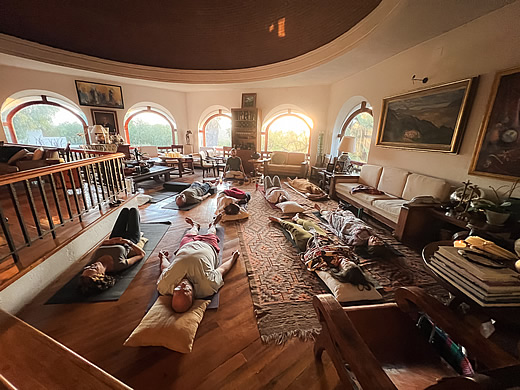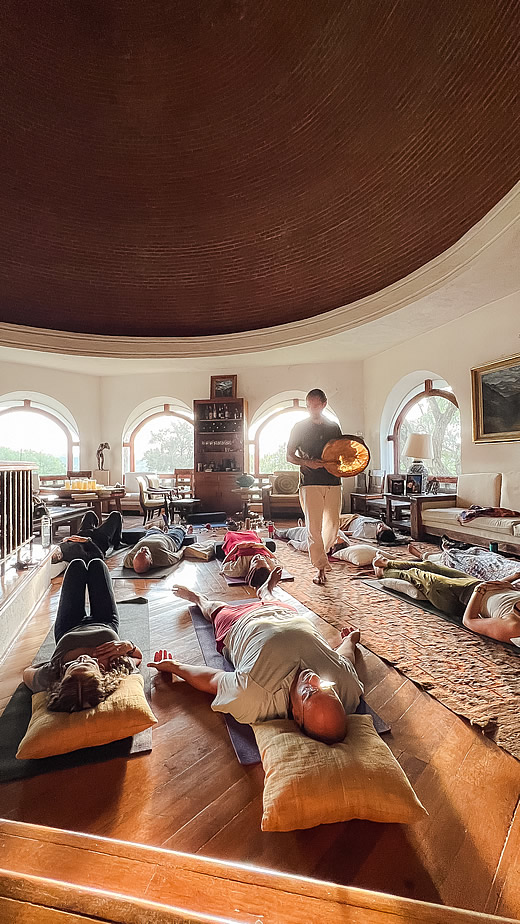Breathwork and Pranayama: The Power of Breathing to Reduce Stress
Stress is an omnipresent phenomenon in modern life, especially in an increasingly demanding work world. The demands of work, personal responsibilities, and the accelerated pace of daily life contribute to elevated levels of stress that can have negative effects on both our physical and mental health. Fortunately, there are effective and accessible tools to manage and reduce stress, among which #Breathwork and #Pranayama stand out. These breathing techniques are not only simple to learn, but also offer profound and long-lasting benefits.
#Breathwork and #Pranayama: What Are They?
#Breathwork is a broad term that encompasses various conscious breathing practices designed to improve physical and emotional well-being. These techniques can include deep, controlled breathing, and specific breathing patterns that directly influence our nervous system.
#Pranayama, on the other hand, is an ancient practice that comes from yoga. In Sanskrit, “prana” refers to life energy and “yama” to its control. Pranayama therefore translates as “control of life energy” through breathing. Pranayama techniques focus on regulating the flow of prana in the body to promote health, mental calm, and longevity.

Stress Reduction Through Conscious Breathing
Stress activates the sympathetic nervous system, which is responsible for the “fight or flight” response. This natural response is helpful in dangerous situations, but when chronically activated due to daily stress, it can cause health problems such as hypertension, anxiety, and chronic fatigue.
Both Breathwork and Pranayama act directly on the autonomic nervous system, helping to activate the parasympathetic nervous system, which is responsible for the “relaxation response.” In doing so, these practices promote calm, slow heart rate, and reduce levels of cortisol, the stress hormone.
Mental and Physical Health Benefits
- Improved Mental Health: Conscious breathing helps calm the mind, which can reduce anxiety and depression. When practiced regularly, these techniques can help reprogram the brain to respond to stress in a more balanced way, decreasing emotional reactivity.
- Improved Physical Health: Deep, controlled breathing increases oxygenation in the body, which improves blood circulation, digestion, and overall organ function. In addition, it reduces blood pressure and strengthens the immune system.
- Combating Accumulated Stress: Through regular practice, it is possible to release accumulated stress in the body. Breathwork and Pranayama allow the release of physical and emotional tensions, facilitating a state of deep and lasting relaxation.
Specific Techniques for Daily Life
For those looking to incorporate these practices into their daily routine, here are some simple yet effective techniques:
- Diaphragmatic Breathing: Also known as abdominal breathing, this technique involves breathing deeply into the diaphragm, allowing the abdomen to expand instead of the chest. This activates the parasympathetic nervous system, promoting calm and relaxation.
- Nadi Shodhana (Alternate Nostril Breathing): This Pranayama balances the cerebral hemispheres and calms the mind. It is performed by alternating inhalation and exhalation through each nostril, which helps harmonize the body and mind.
- Box Breathing: This involves inhaling for four seconds, holding the breath for four seconds, exhaling for four seconds, and then holding the lungs empty for four seconds. This technique is particularly useful for relieving stress during times of high tension.

Conclusion
Breathwork and Pranayama are powerful tools for reducing stress and improving mental and physical health. By integrating them into our daily lives, we can better cope with the pressures of work and other challenges, while maintaining a state of balance and well-being. In a world that demands so much of us, learning to control our breathing can be the key to staying centered, healthy, and at peace.
Incorporating these techniques into your routine does not require large investments of time or resources, just the commitment to dedicate a few minutes a day to focus on something as simple, yet as transformative, as your breathing.









Comments